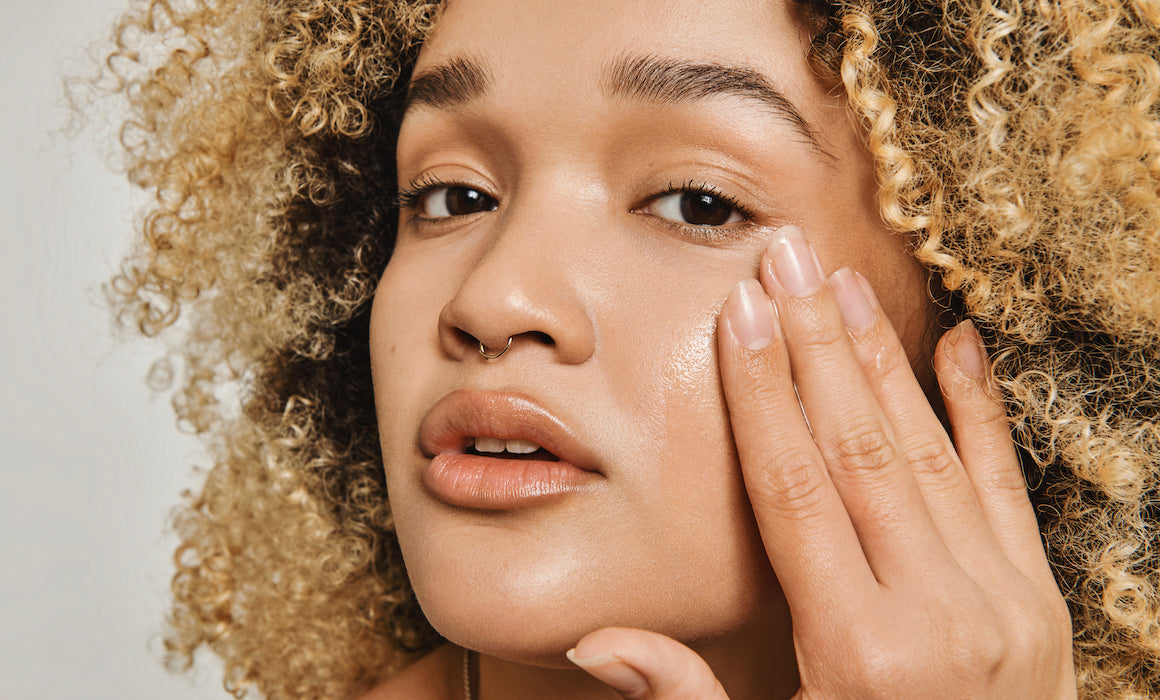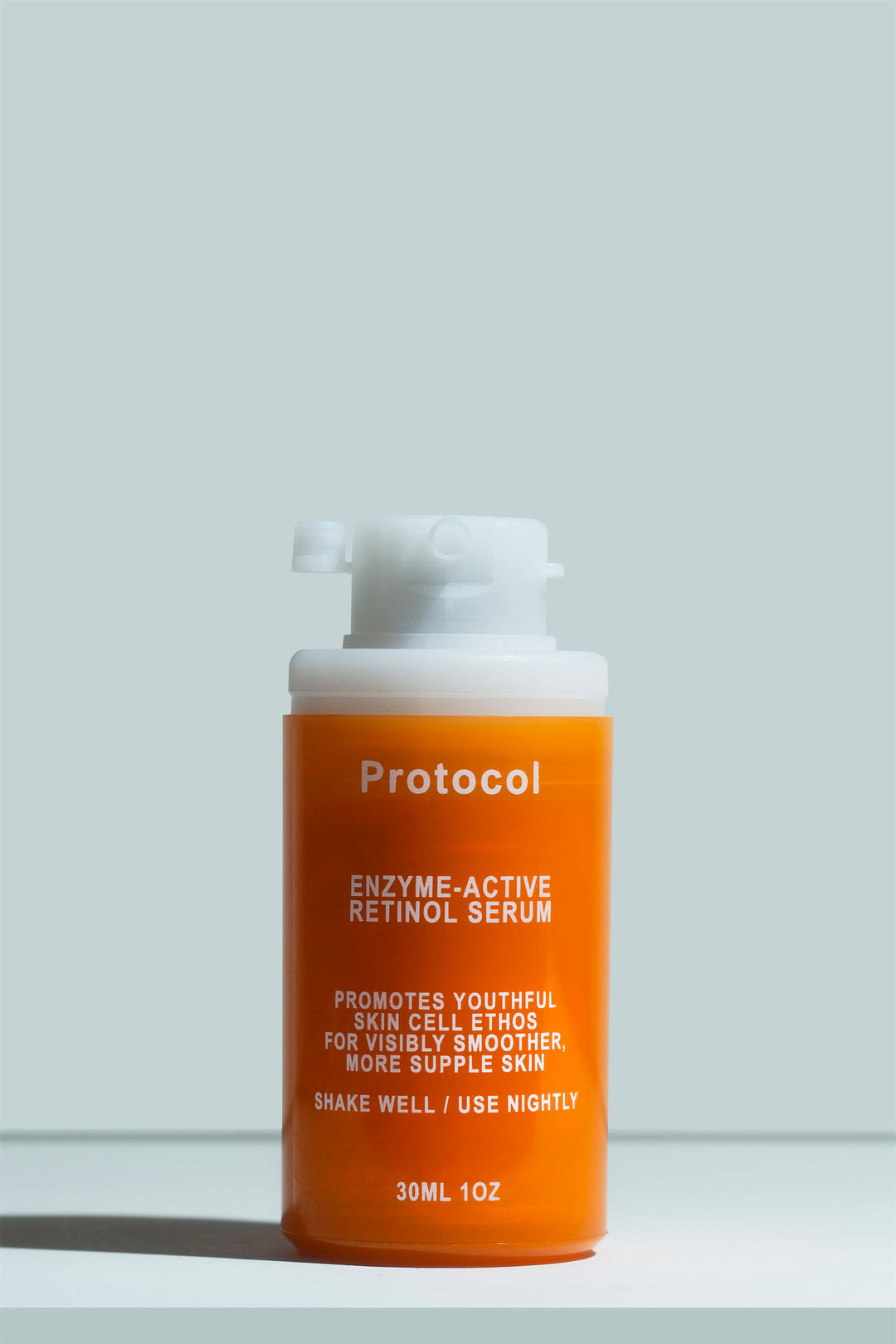What to Look For in a Vitamin C Serum That Works


Vitamin C is our skincare superhero. Before it can fight crime, however, it needs to be active. Just like a superhero that needs their special object to harness their power, vitamin C needs to be in its active form, ascorbic acid.
Ascorbic acid is the purest and most potent form of vitamin C in skincare, and it’s incredibly picky
It’s the only form of vitamin C actually provides all of vitamin C’s skin benefits, like a clearer skin tone and wrinkle reduction. But as an ingredient with such a powerful effect, it’s entitled to be a little (okay, very) finicky.
Unfortunately, vitamin C in its pure form is extremely unstable, so formulating it in a way that keeps it intact, effective, and bioavailable is very difficult. A lot of the vitamin C products out there don’t work at all!
Many brands don’t use real vitamin C, instead choosing ineffective derivatives. Others combine it with stinky ferulic acid or formulate it as a poorly-penetrating silicone suspension. Some brands don’t care at all and let the vitamin C lose its efficacy, sometimes in the warehouse before it even reaches your home. Once your vitamin C serum turns brown, it's no longer working.
To make sure you choose an effective vitamin C serum, here are our key selection tips.
How does vitamin C work?
When it’s actually well-formulated, vitamin C acts like a superhero that fights off the supervillains to protect your skin.
Those supervillains are free radicals, which are molecules or atoms with an unpaired electron. In search of completion, they end up destroying other molecules that cross their path. Free radical damage comes from sun exposure, smoking, and exposure to pollution, and it leads to early signs of skin aging.
Vitamin C is a super antioxidant that elevates the skin’s protective ability dramatically. Once a vitamin C serum is applied to the skin, the skin’s vitamin C levels rise, so you’re effectively protected from free radical damage for the next 24 hours.
This dramatic protection boosts your sunscreen and prevents trauma to the skin that leads to wrinkles, dark spots, and irritation. Plus, vitamin C has a few active benefits, like its ability to stimulate collagen production and inhibit irregular production of melanin.
How to find a vitamin C serum that works
When you’re as powerful as vitamin C, you deserve to have high standards.
Joke asides, vitamin C serums are notoriously hard to formulate. As a result, most vitamin C products on the market don’t deliver even a fraction of this nutrient’s potential benefits.
Brands that follow evidence-based formulation practices can create effective formulas. Here are the things to look for in a vitamin C serum that actually works:
The real, pure form of vitamin C
Just because it says “Vitamin C Serum” on the front panel doesn’t mean it’s really a vitamin C serum.
If you want real vitamin C, scan the ingredient list for ascorbic acid or l-ascorbic acid (in cosmetics, they’re the same thing). This is the natural, pure form of vitamin C and is the only form that your skin can actually use. It also has a researched track record proving its efficacy as an anti-aging, brightening, and skin-protecting ingredient.
The vitamin C derivatives that show up in so many skincare products have to convert into ascorbic acid before they can impact the skin. A lot of ascorbic acid is lost in the conversion, which reduces the potency of the overall formula.
Plus, while there’s some promising data with these derivatives, it largely only comes from manufacturers who have a vested interest in selling their derivatives. Most of these studies are done in vitro rather than on real people, so it’s also unclear whether the claimed effects actually apply to humans.
Water-based formula
You can find vitamin C in creams, lotions, cleansers, and serums. Of the bunch, only water-based serums make sense as a vitamin C delivery method.
Ascorbic acid is water-soluble, and it’s attracted to the water-based components of the skin. Combining it with oils or oil-like substances only serves to slow or inhibit its rate of penetration into the skin.
However, water-based formulas are also less stable and quicker to degrade. That’s why many brands have started creating vitamin C suspensions. This means that the ascorbic acid powder is dispersed in an occlusive cream formula. The vitamin C only dissolves once it comes in contact with the skin.
This method isn’t efficient, so brands have to use very high amounts of vitamin C to achieve any effect. However, the vitamin C doesn’t necessarily absorb into the skin evenly, so you can end up with hot spots of too much vitamin C while other areas left untreated.
Correct pH level
As we mentioned, ascorbic acid is water-soluble. Our skin, on the other hand, relies on its lipid-based intracellular matrix to stay intact and keep bad pathogens out.
We can get around that by formulating water-based vitamin C serums at a pH lower than 3.5. This is the level at which vitamin C remains stable and can be absorbed by the skin, but isn’t so acidic as to irritate. Most brands don’t disclose pH, but at Protocol Lab, we understand the importance of knowing this fact.
Ideal concentration
Nowadays, a lot of vitamin C products can be split into two categories: Either brands don’t disclose concentration at all, or they use an absurd amount of the stuff.
Research shows that 10% is the ideal amount needed for vitamin C to fully saturate the skin. A more is more attitude combined with ineffective formulas of vitamin C means that brands feel comfortable amping up the percentage.
Then we have the brands that don’t bother to disclose their vitamin C percentage at all. These companies are well aware of how much vitamin C they’re using in their products, so if they don’t disclose it, chances are the quantity they’re using is measly.
When we can’t tell for sure, one of our favorite tricks is to look at the ingredient list. If ascorbic acid shows up after preservatives (usually listed as phenoxyethanol) or fragrance ingredients, it means there’s less than 1% of it in the overall formula.
Stable packaging
For a vitamin C serum to work, it has to be made with ascorbic acid and formulated in a water-based formula with a low pH.
Most formulators are aware of this important fact, so why aren’t all skincare brands formulating this way? Because the result is a very unstable product. Vitamin C is an antioxidant, and the second it’s exposed to air, it wants to oxidize. That’s how it protects your skin, after all.
The only way to get around this issue is by crafting and bottling vitamin C products in an oxygen-free environment. Then, the packaging itself must be truly air-tight as well, which actually isn’t the case for most products advertised as airless. In the US, Protocol’s Vitamin C Superserum is the only product on the market bottled in this fashion.
Look at the color
If you already have a vitamin C serum in your hands, have a look at its color. Assuming you have a water-based ascorbic acid serum at the right pH, you’ll be able to tell if it has lost its potency pretty easily. Fresh, effective vitamin C is colorless and nearly odorless.
If your product smells weird or has a brown color, it’s lost its effectiveness.
A lot of popular vitamin C serums smell weird, but that shouldn’t be the norm. The bad smell often means the product has oxidized, and any vitamin C it once had is no longer potent.
A lot of brands formulate their products with dyes or fragrances, as a way to hide if the serum oxidized. We suggest staying away from those, entirely.
Making the diva sing
It’s hard to create a vitamin C that’ll measure up to all of these requirements. Putting ascorbic acid in a bottle? Pretty easy. Having it remain effective even after it’s been shipped to a customer? Much harder.
Like a diva that needs total darkness, calm, and a very specific brand of sparkling water before she goes out on the stage, vitamin C needs that ultra-stable environment to brighten and protect the skin.
When designing our Vitamin C Superserum, our biggest challenge was the packaging. After months of research, we perfected our oxygen-free bottles and bottling process with the help of aerospace industry technology.
The final result? A genuinely effective and stable vitamin C serum that works. If it ever loses its potency, you’ll know, because the formula is colorless and fragrance-free (although the ingredient blend does have a naturally pleasant scent).
At Protocol Lab, our diva sings.





